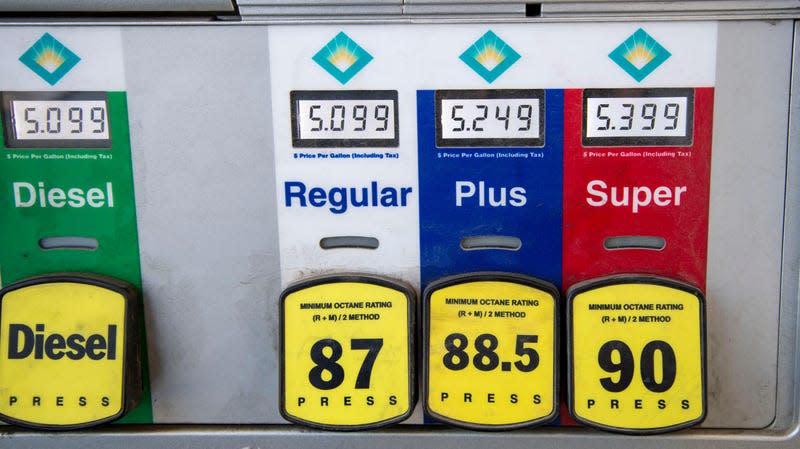What’s The Point Of Mid-Grade Gasoline?

If you’re like most of us here at Jalopnik, you’ve probably wondered why gas stations offer mid-grade gasoline when almost every automaker recommends either regular or premium fuel. As it turns out, very few cars are designed to use mid-grade gas, so it exists mostly to coax unknowing consumers into spending more on gas, and it’s a relic from the days of leaded gasoline. To explain how, we have to look into the annals of history.
Cars used to run on leaded gasoline until the EPA began banning the use of it in new cars in the ’70s, and it stopped being available at gas pumps around the mid-1990s. During the transition from leaded to unleaded gasoline, most gas stations offered regular leaded gasoline, regular unleaded gasoline, and premium unleaded gasoline.
Once gas stations stopped offering toxic leaded gasoline at the pumps, the pumps still had an extra button, so companies started mixing premium and regular unleaded gasoline to produce a mid-grade. This was done in anticipation of automakers producing cars intended to run on mid-grade gasoline, however the automakers didn’t actually end up doing that., according to CNET,
Most refiners don’t really make midgrade gas. They make regular and premium and that’s what’s stocked underground at the gas station. When you squeeze the midgrade handle you get a cocktail of the two fuels, “splash blended” as you pump. Thank the EPA, because it tightened underground storage tank rules in 1988 and again in 2015, causing a lot of service stations to dig up and replace their old gas storage tanks. When they put new ones in they often installed just two and started to blend on the fly.

 Yahoo Autos
Yahoo Autos 